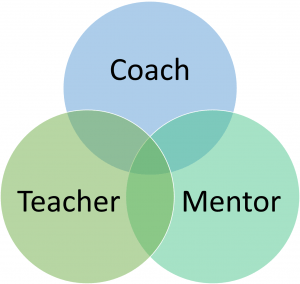
Among the many attributes a leader must possess, the most important is the ability to effortlessly transition from one leadership approach to another, in effect gliding between styles that best serve the developmental needs of those individuals they serve. Truly masterful leaders know how and when to bring those approaches to bear.
A leader can be a mentor some of the time, a coach on other occasions, and a teacher when it is useful. Think of the three attributes – Mentor, Coach and Teacher – as some of the most powerful tools in your leadership toolbox.
Each can serve the needs of others. And notice that I intentionally don’t use the word “subordinate,” because we often are serving the needs of colleagues or team members and even bosses that have a desire to grow. It’s an important distinction, especially considering that sometimes those we serve end up being in positions that might later have a higher “rank” in the chain of command. In effect, we take turns leading others, but if the habits are there to help others on their developmental journeys, does it really matter what position she or he holds? In that regard, I often use the famous Chaucer quote, “And gladly would he learn and gladly teach,” to remind myself and clients of that philosophy.








